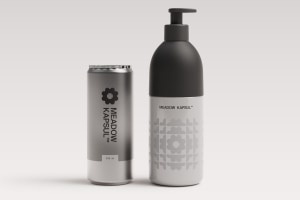Guala Closures Australia has teamed up with O-I and De Bortoli Wines to launch what it claims is the first screw cap closure for sparkling wine.
The innovative closure called Viiva was developed locally by Guala over a five-year period in response to ongoing complaints from industry and consumers about traditional sparkling wine cork closures, including that they’re hard to open; can taint the product; and they don’t retain carbonation.
The Viiva closure, which is suited to traditional five-gas-volume sparkling wines, looks like a regular wine screw cap, but the materials used and functionality is very different. The closure provides greater convenience for consumers, is familiar and easy-to-open. As it can be resealed – maintaining pressure for weeks after opening – it also minimises wastage.
The Australian table wine market is dominated by screw caps, which are used on around 85 per cent of products. Guala’s new closure now brings the screw cap revolution over to sparkling wine.
Guala subjected the closure to rigorous internal tests for pressure retention, heat (of 60oC for two weeks), refrigeration, and harsh storage and transportation conditions.
The closure is currently only suited to sparkling wines made using the transfer method and not for premium sparkling wines or champagnes made using the champenoise (champagne) method, which accounts for around 40 per cent of Australian production.
O-I collaborated with Guala to develop a bottle specifically designed to fit the closure that can be run down De Bortoli’s existing bottling lines.
Guala’s national sales and marketing manager Simon Yudelevich believes the sparkling screw-cap closure provides consumers and winemakers with significant advantages.
“For the consumer, Viiva is perfectly suited to sparkling wines which are popular among women who often report difficulties in opening cork closures and resealing a bottle with alternative closures once opened,” said Yudelevich. “Viiva eliminates safety issues associated with opening cork-closures and will encourage responsible consumption of alcohol as it enables consumers to drink one glass of wine, while maintaining carbonation days after opening.
“The biggest advantage for winemakers is the ability for them to work with one type of closure component, helping to reduce the complexity of filling lines and improve production efficiencies.”
The new Viiva closure provides additional benefits for on-premise customers and event organisers.
“This technology appeals to on-premise customers because it reduces the time staff spend opening sparkling wines, a major advantage when dealing with multiple bottle openings at busy venues or events when speedy drink serving is required,” said Yudelevich.
De Bortoli Wines is using the Viiva closure and O-I bottle for its popular Trevi range which includes three varietals as well as its on-premise premium Willowglen Sparkling Brut. De Bortoli’s national sales manager Peter Yeoman says the fact the winery is using the closure for a high volume brand and its leading function wine demonstrates its commitment.
“We’ve made the decision to convert the entire Trevi range and Willowglen Sparkling Brut exclusively to the new closure because this technology is truly ground-breaking and will put Australia’s sparkling wine industry at the forefront of innovation,” said Yeoman.
In order to educate consumers about the new closure, De Bortoli has updated its label with a distinctive bubble design so the consumer isn’t confused by the bottle shape, which is similar to a standard wine bottle. The neck label has also been updated to communicate the closure’s point of difference.
The Viiva closure was first launched locally and subsequently launched in New Zealand and showcased at the London International Wine Fair 2012.
Guala Closures operates 23 plants around the world, is present in 100 countries and produces around 12 billion units a year. In Australia, Guala has two plants and 130 employees.






